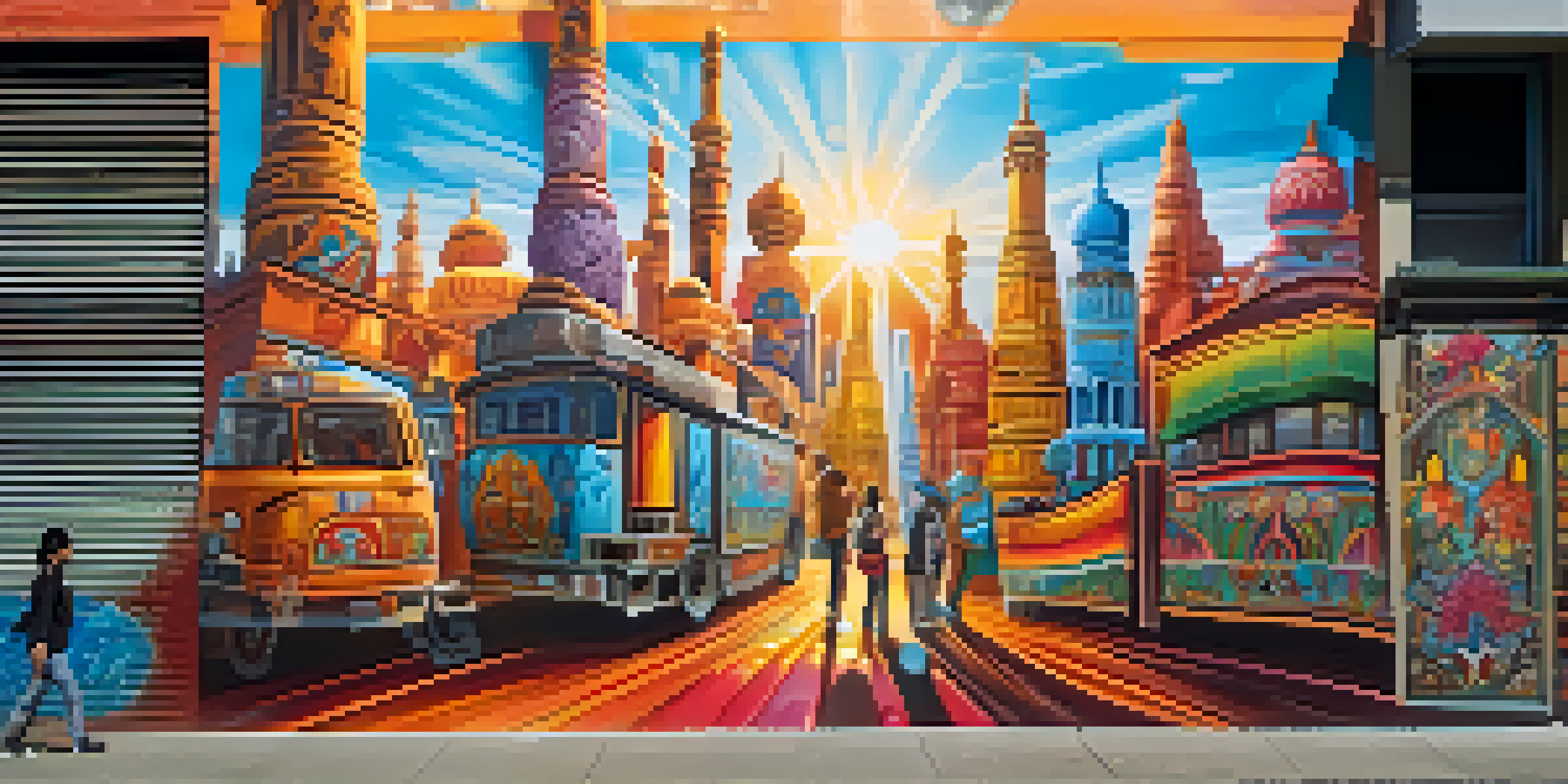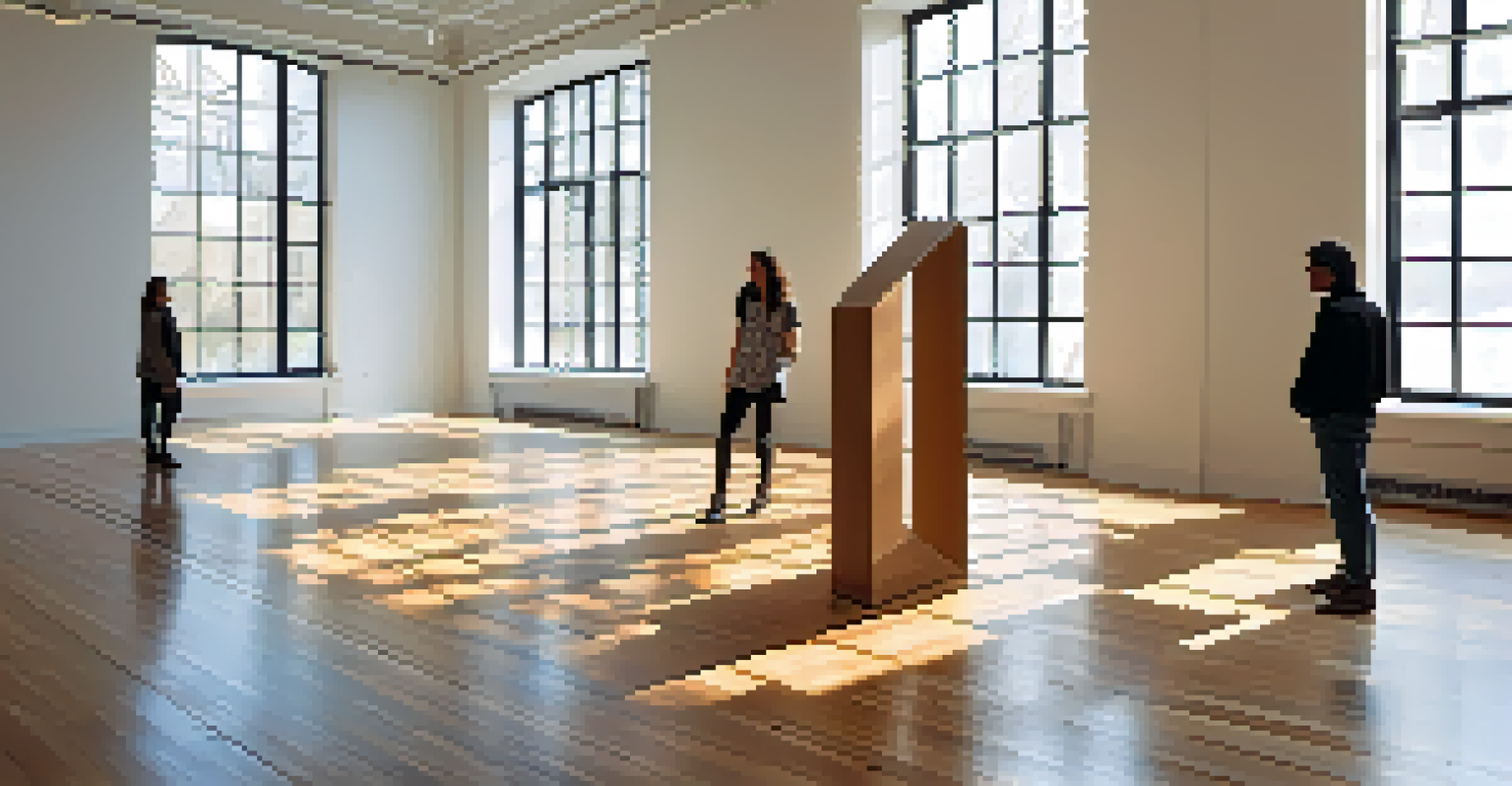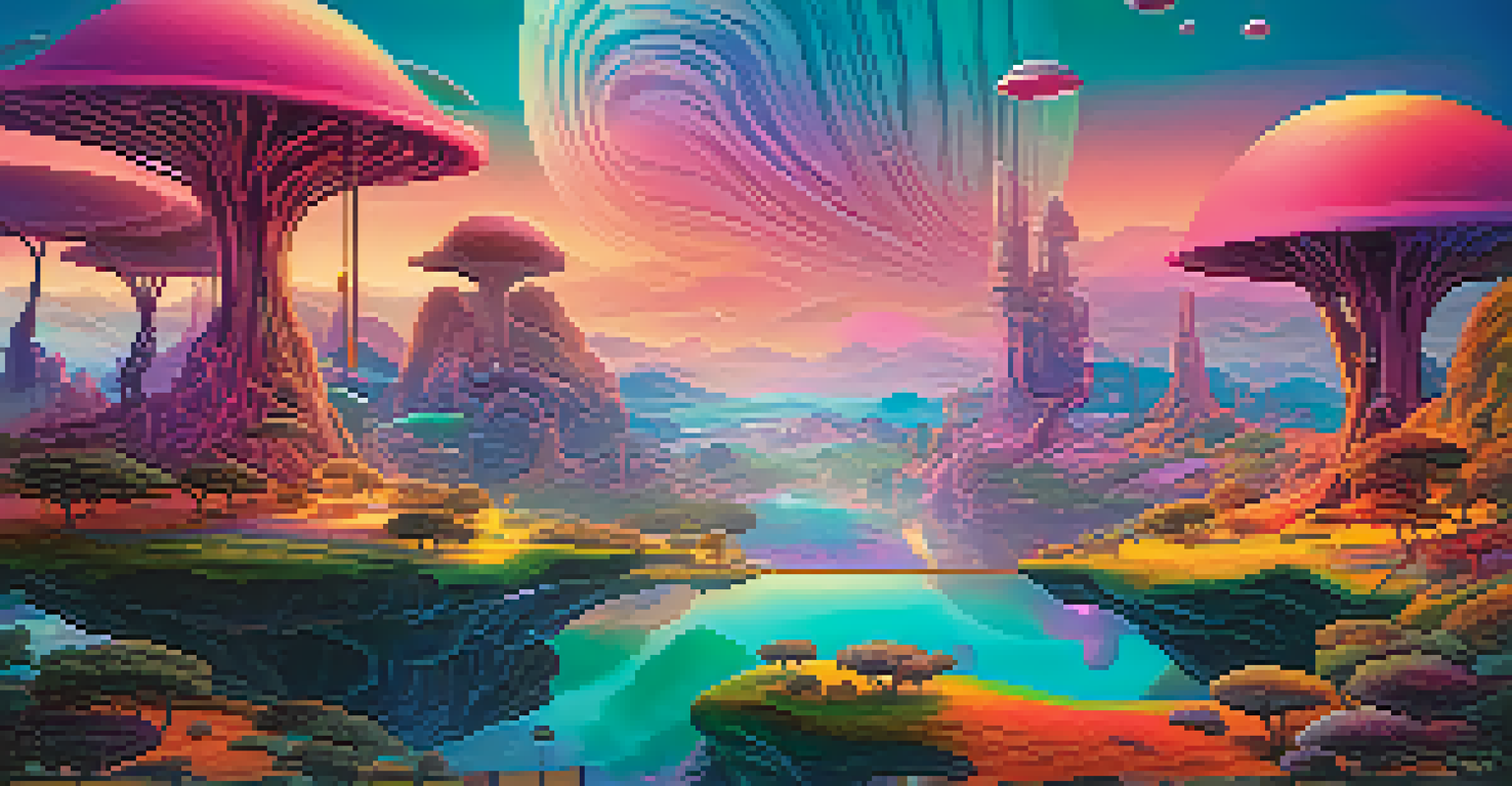The Influence of Globalization on Contemporary Art Practices

Defining Globalization in the Art Context
Globalization refers to the interconnectedness of cultures, economies, and societies across the world. In the realm of art, this concept means that artists are no longer confined to their local environments; they can draw inspiration from global influences. This can be seen in various art movements that blend traditional techniques with modern themes, creating a rich tapestry of global expression.
Art is a reflection of society, and as society becomes more interconnected, so too must the art that reflects it.
For instance, artists now have access to a plethora of resources and styles from different cultures, allowing them to experiment and innovate. This blending of influences can lead to new artistic movements that challenge the status quo. Many contemporary artists embrace this diversity, resulting in works that reflect a global dialogue rather than a singular narrative.
As globalization continues to evolve, it reshapes how art is created, distributed, and understood. Artists are increasingly addressing global issues such as climate change, migration, and social justice, making their work relevant on an international scale. Thus, globalization is not just an influence but a driving force in contemporary art practices.
Cultural Exchange and Artistic Innovation
One of the most significant impacts of globalization on art is the increased cultural exchange. Artists from different backgrounds collaborate, share ideas, and inspire one another, leading to innovative artistic practices. For example, the fusion of Eastern and Western art styles can produce unique pieces that resonate with a broader audience.

This cross-pollination of ideas can be seen in exhibitions that showcase a mix of international artists. Events like the Venice Biennale or Art Basel highlight how artists from diverse backgrounds come together, creating a melting pot of creativity. These platforms not only celebrate individual talent but also foster global conversations around art.
Globalization Transforms Artistic Expression
Globalization enables artists to draw inspiration from diverse cultures, leading to innovative art that reflects a global dialogue.
Moreover, such cultural exchanges challenge traditional art narratives, encouraging artists to reflect on their identities and histories. This results in art that is deeply personal yet universally relevant, pushing boundaries and inviting viewers to engage with complex themes. Ultimately, the dynamic nature of globalization enriches the artistic landscape.
The Role of Technology in Global Art Practices
Technology plays a crucial role in facilitating globalization in art. Digital tools and platforms allow artists to share their work instantly with a global audience. Social media, for instance, has transformed how artists promote themselves and connect with fans, breaking down geographical barriers.
Cultural exchange is essential to the evolution of art, but it must be approached with respect and understanding.
Online galleries and virtual exhibitions have also emerged, making art more accessible than ever. Artists can showcase their work to international collectors and art lovers without the need for physical presence. This democratization of art access broadens the audience and encourages diverse interpretations of art from around the world.
Furthermore, technology enables collaboration across borders, with artists working together on projects in real-time despite being miles apart. This interconnectedness fosters a sense of community and shared purpose among artists, leading to innovative projects that reflect a blend of global perspectives. In this way, technology not only enhances visibility but also fosters creativity.
Global Issues Reflected in Contemporary Art
Contemporary art often serves as a mirror to global issues, reflecting societal challenges such as inequality, environmental degradation, and political unrest. Artists are increasingly using their platforms to address these pressing concerns, creating works that provoke thought and inspire action. This engagement with global topics makes art a powerful vehicle for social change.
For example, many artists are tackling climate change through their work, illustrating its impacts and calling for awareness. Installations and performances that highlight environmental degradation encourage viewers to consider their relationship with the planet. By integrating these themes into their art, artists not only raise awareness but also foster dialogue around potential solutions.
Technology Enhances Art Accessibility
Digital platforms and social media allow artists to showcase their work globally, democratizing access to art and fostering collaboration.
Additionally, the intersection of art and activism has gained momentum in recent years. Artists are collaborating with grassroots organizations to amplify marginalized voices and advocate for social justice. This fusion of creativity and activism demonstrates how globalization influences contemporary art not just in aesthetics but in purpose.
Challenges of Cultural Appropriation in Art
While globalization opens up avenues for cultural exchange, it also raises concerns about cultural appropriation. This occurs when artists borrow elements from another culture without understanding or respecting its significance. Such practices can lead to misrepresentation and exploitation, sparking debates within the art community.
For instance, when Western artists adopt indigenous motifs without acknowledging their origins, it can dilute the meaning behind those symbols. This raises the question of who has the right to represent a culture in their work. Artists must navigate these complexities and strive for authenticity in their practices, ensuring that they honor the cultures they draw from.
Conversations around cultural appropriation encourage artists to engage more deeply with the cultures they reference. By collaborating with cultural bearers and seeking permission, artists can create works that are respectful and meaningful. This approach not only fosters understanding but also enriches the art world by celebrating diverse narratives.
The Impact of Global Art Markets
Globalization has transformed the art market, creating a landscape where artworks are bought and sold across borders. Collectors now have access to a wider range of art, leading to increased demand for international artists. This shift has profound implications for how artists produce and market their work.
Art fairs, auctions, and online platforms have become essential for artists to gain visibility and attract buyers. However, this global market also introduces competition, pushing artists to distinguish themselves in a crowded field. As a result, many are exploring innovative ways to engage with audiences and create memorable experiences.
Art Reflects Global Social Issues
Contemporary art increasingly addresses pressing global challenges, such as climate change and social justice, making it a powerful tool for social change.
Moreover, the rise of the global art market has led to the emergence of new art hubs around the world. Cities like Beijing, Lagos, and Mexico City are becoming important centers for contemporary art, contributing to a more diverse and dynamic art scene. This evolution reflects the interconnectedness of artists and collectors, highlighting the global nature of contemporary art.
Future Trends in Global Contemporary Art
As globalization continues to shape the art world, several trends are emerging that will influence future practices. One notable trend is the growing emphasis on sustainability and eco-consciousness. Artists are increasingly using recycled materials and sustainable processes, reflecting a collective commitment to environmental responsibility.
Another trend is the rise of digital art and NFTs (non-fungible tokens), which are changing the way art is created, owned, and shared. This digital shift allows artists to reach new audiences and explore innovative forms of expression. As technology evolves, it will undoubtedly continue to impact artistic practices and market dynamics.

Finally, the push for inclusivity and representation will likely remain a focal point in the contemporary art scene. Artists from diverse backgrounds will continue to challenge traditional narratives and highlight underrepresented voices. This commitment to inclusivity will enrich the art world, ensuring that it reflects the complexities of our global society.